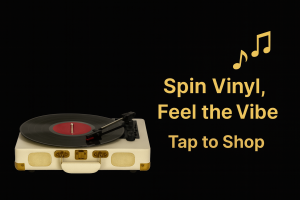Some songs don’t just play in the background—they sink into your soul. Drive is one of those rare tracks that captures emotion so effortlessly that it feels like a moment frozen in time.
Unlike the high-energy hits that made The Cars famous, this ballad stands apart with its haunting melody, introspective lyrics, and deeply moving vocals.
A song about love, loss, and the quiet pain of watching someone self-destruct, Drive remains one of the most powerful ballads from classic rock artists.
- Writer: Ric Ocasek
- Album: Heartbeat City (1984)
- Producer: Robert John “Mutt” Lange
📝 Background & Meaning:
“Drive” was written by Ric Ocasek, the lead songwriter and rhythm guitarist of The Cars.
Released as the third single from their album Heartbeat City in 1984, the song became one of The Cars’ biggest hits, reaching #3 on the Billboard Hot 100 and topping charts in several other countries.
Unlike many of The Cars’ upbeat, synth-heavy tracks, “Drive” is a haunting, introspective ballad.
It features bassist Benjamin Orr on lead vocals, whose smooth and emotive delivery added a deep layer of vulnerability and melancholy to the song.
Lyrically, “Drive” explores themes of loss, dependency, and emotional fragility in a failing relationship.
The recurring question, “Who’s gonna drive you home tonight?”, symbolizes care, responsibility, and the realization that someone may be spiraling out of control without help or support.
The song can also be interpreted as addressing addiction, emotional breakdown, or even self-destructive behavior, making it relatable on multiple levels.
🎤 Key Themes:
- Emotional Dependency: The song explores the fragility of relying on someone who may not always be there.
- Loneliness and Vulnerability: It captures the isolation and sadness that follow a breakup or strained relationship.
- Unresolved Love: The repeated questioning suggests concern and love that persists despite emotional distance.
- Responsibility and Care: The imagery of “driving someone home” serves as a metaphor for providing emotional or physical support.
🎧 Notable Lyrics:
“Who’s gonna tell you when / It’s too late?”
- A heartbreaking acknowledgment of someone refusing to recognize their own downward spiral.
“Who’s gonna pick you up / When you fall?”
- A metaphor for providing emotional or physical care during moments of vulnerability.
“Who’s gonna drive you home tonight?”
- The central refrain, symbolizing concern and a lingering sense of responsibility.
🎸 Musical Highlights:
- Benjamin Orr’s Vocals: Orr delivers an emotional, vulnerable vocal performance, making the song deeply moving.
- Melancholic Synths: The soft, atmospheric synthesizer creates a dreamlike, introspective ambiance.
- Subtle Guitar Work: Ric Ocasek’s gentle guitar backing enhances the song’s reflective tone.
- Understated Drum Beat: David Robinson’s steady drum pattern keeps the track grounded without overpowering it.
- Emotional Build-Up: The arrangement subtly crescendos, adding to the song’s emotional weight.
🌍 Cultural Impact:
- “Drive” became one of The Cars’ most recognizable songs, transcending their usual new wave and rock sound.
- The song gained immense emotional resonance when it was used during Live Aid (1985), accompanying footage of famine victims in Ethiopia. This gave the song a new layer of depth and social significance.
- It’s frequently featured in movies, TV shows, and commercials, symbolizing heartbreak, care, and emotional fragility.
- The haunting music video, directed by Timothy Hutton, features Paulina Porizkova (Ocasek’s future wife), further emphasizing the song’s theme of emotional distance and loss.
🎤 “Drive” Fun Fact:
- The Live Aid performance of “Drive” played over harrowing footage of famine victims in Ethiopia, making it one of the most impactful uses of music in humanitarian campaigns.
- Although Ric Ocasek wrote the song, he chose Benjamin Orr to sing it, believing Orr’s voice better suited its emotional tone.
- The song was nominated for Best Pop Performance by a Duo or Group at the Grammy Awards in 1985.
🔑 What It Represents:
“Drive” isn’t just a song—it’s a deeply emotional ballad about love, loss, and the quiet moments of care that define relationships.
It represents:
- The fragility of human connections and dependency.
- A universal feeling of concern and care for someone spiraling out of control.
- The Cars’ ability to step away from upbeat new wave anthems and create something hauntingly beautiful.
- One of the most memorable songs of the 1980s for its emotional depth and timeless appeal.
With its heartfelt lyrics, Benjamin Orr’s haunting vocals, and an unforgettable synth-driven sound, “Drive” remains one of the most poignant and emotionally resonant ballads of its era. 🎶💔🚗
🎶 Why It Still Resonates Today:
“Drive” continues to captivate listeners because of its deep emotional pull.
The song’s themes of heartbreak, concern, and human fragility remain universal, making it just as impactful today as when it was released.
Classic rock artists often craft songs that stand the test of time, and Drive is no exception—its haunting melody and introspective lyrics still speak to anyone who has ever felt responsible for someone slipping away.
The track’s melancholic synth-driven sound blends nostalgia with raw emotion, ensuring its lasting legacy in rock history.
Closing Statement 🔚🎶🔥
Few songs capture quiet heartbreak quite like Drive.
The Cars took a step away from their upbeat, synth-heavy sound to deliver a track that feels deeply personal and universally relatable.
Classic rock artists have a unique way of making listeners feel something profound, and with its soft but striking melody and haunting lyrics, Drive remains one of the most unforgettable ballads of its era.
Whether you’ve experienced love, loss, or the weight of watching someone drift away, this song lingers long after the last note fades.

